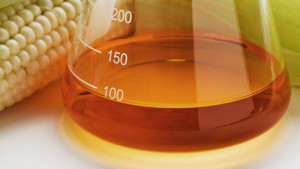Let’s go back to the 1970s. This is when food prices in the U.S. started to drop dramatically because the U.S. government began to subsidize corn and soy farmers to grow these two crops (Philpott). It was during this time period that the American diet quickly increased by  a whopping five hundred calories a day, which was mostly caused by the introduction of corn syrup, provided by the subsidized farms (Hyman). Of these additional calories, about fifty percent of them come from corn syrup and another twenty five percent from soy. (Macadair)
a whopping five hundred calories a day, which was mostly caused by the introduction of corn syrup, provided by the subsidized farms (Hyman). Of these additional calories, about fifty percent of them come from corn syrup and another twenty five percent from soy. (Macadair)
What is the cost of these farm subsidies that are being spent to grow a crop that is used to simply sweeten food without any nutritional value whatsoever? During a fifteen-year span from 1995 to 2010, agricultural subsidies in the United States were about 262 billion dollars. Subsidized corn has made everything cheaper, from meat being corn-fed, milk, eggs, and of course just about every type of sweet and snack food imaginable. However, the hidden costs of food go far beyond what U.S. taxpayers are supporting with unnecessary subsidies for corn and related crops.
Less than three percent of our farmland is used to grow fruits and vegetables. There is one, and only one, reason for this; fruits and vegetables are not profitable products. Soda, essentially corn syrup and water, has a profit margin of about ninety percent. The sale of vegetables and fruit has a profit margin of less than ten percent. If you  are one of the giant agricultural firms that control the farmland in the United States, there is no choice in what to grow. These companies either grow corn or cannot compete and stay viable. Growing healthy food that can be eaten simply isn’t profitable for most farmers. As a result of having so little of our available agricultural real estate used for the production of healthy foods, there aren’t enough fruits and vegetables grown in the U.S. to feed its citizens the recommended daily allotment of fruits and vegetables (Neff). Yet the United States is by far the world’s number one exporter of corn as a direct result of taxpayer subsidies. This ensures that not only is the U.S. corn scheme destroying the health and lives of its own people; through government sponsorship we are able to spread this poisonous use of corn byproduct to the rest of the world also.
are one of the giant agricultural firms that control the farmland in the United States, there is no choice in what to grow. These companies either grow corn or cannot compete and stay viable. Growing healthy food that can be eaten simply isn’t profitable for most farmers. As a result of having so little of our available agricultural real estate used for the production of healthy foods, there aren’t enough fruits and vegetables grown in the U.S. to feed its citizens the recommended daily allotment of fruits and vegetables (Neff). Yet the United States is by far the world’s number one exporter of corn as a direct result of taxpayer subsidies. This ensures that not only is the U.S. corn scheme destroying the health and lives of its own people; through government sponsorship we are able to spread this poisonous use of corn byproduct to the rest of the world also.
I recently read a blog debunking the myth that corn syrup is evil. This blog extolled the “naturalness” of corn syrup- it was a baking blog. Comments were generally supportive  from other bakers, some even pointing out that there is GMO-free corn syrup available for “healthy” home cooking. It is my hope that the blogger’s intention was to defend home-baking practices, but let there be no smoke and mirrors, corn syrup in store-bought products should be avoided. The problem with the blogger’s argument is that corporations use corn syrup for one reason- to fatten their own wallets at the cost of beefing up our waistlines. When you closely examine products containing corn syrup, generally their sugar content is off the charts.
from other bakers, some even pointing out that there is GMO-free corn syrup available for “healthy” home cooking. It is my hope that the blogger’s intention was to defend home-baking practices, but let there be no smoke and mirrors, corn syrup in store-bought products should be avoided. The problem with the blogger’s argument is that corporations use corn syrup for one reason- to fatten their own wallets at the cost of beefing up our waistlines. When you closely examine products containing corn syrup, generally their sugar content is off the charts.
What is most disturbing is the wide range of products that corn syrup is found in. Nearly five years ago when I stopped buying products with corn syrup, I was in shock as I went through my cabinet and found the sweetener in everything from my wheat bread and salad dressings, to my BBQ sauce and cheese. Simply put, gross. The good news is that there is a near-perfect correlation between companies that put corn syrup into their foods with the foods that are better off to avoid anyway. Now, years later, there is not a product that I love that I cannot find without corn syrup, it just takes some shopping diligence.
Avoiding corn syrup may cost a few dollars at the super market register, but what is the real cost of our over consumption of this sweetener and other highly processed foods? The United States is faced with an epidemic of obesity. The heart of the matter, figuratively and literally, is the cost of America becoming the fattest nation in the world by leaps and bounds. Cardiovascular disease, the number one cause of death in the United States is currently costing over a trillion dollars a year in direct and indirect healthcare costs.
To put a human face on that statistic, fifty percent of the deaths of firefighters in America are caused by heart disease (Macadair) Diabetes will soon be costing upwards of five-hundred billion dollars a year (Scott-Mumby). Treating these two diseases will in the future cost more money than the entire current yearly budget of the U.S. While these costs seem staggering, these are simply the big easy to see numbers. When taking a closer look at the less obvious costs of cheap unhealthy food the results are indeed dire.
Obesity-related issues cause almost ten percent of absences from work. Doctor visits increase forty percent with obese patients. The most common plastic surgery in America is liposuction that is performed over four hundred thousand times a year. Gastric bypass surgery is only a little better with over two hundred thousand patients a year with a cost of twenty-thousand dollars per surgery, and every cardiac bypass surgery costs an amazing fifty thousand dollars (Hyman).
With unhealthy food causing a plethora of medical problems, the costs go beyond lost productivity and billions of dollars in surgeries. American’s spent almost eleven billion dollars in 2010 on Lipitor, the most common cholesterol drug on the market. Medifast, a provider of popular diet pills, reported first quarter earnings of almost one hundred million dollars in 2011 (Lubin, Sprung) In the same vain, P90X, a home exercise routine sold by Beachbody, reported profits of over two hundred million dollars in 2010. These companies can’t be blamed for profiting off of the healthcare crisis that is resulting from our toxic food chain, but their massive profits are yet another indicator of the externalities involved in paying less money for what we put into our bodies.
We have all heard the expression, “You get what you pay for”. This has never been so true as now in the world of the modern food basket. Cheap food brings obesity, disease, and a countless list of other physical and mental ailments. Part of the mission of Living to Smile is to show consumers that every purchase is a vote. This is something we all need to  understand. When we go to a supermarket and spend heavily in the natural foods section, this gets noticed, and the product selection will slowly increase. Our food vote also forces corporations to change their wicked ways. When we see major brands starting to put “GMO free”, “Free Range”, “Certified Organic”, and other related labels on their products, we can know that slowly but surely there are battles being won, but this is a war of atrition. For now, pick up that bread, look at those sauces, read the label on your drinks and avoid corn syrup. I promise that the product you find to replace it with will bring you better health and a longer life.
understand. When we go to a supermarket and spend heavily in the natural foods section, this gets noticed, and the product selection will slowly increase. Our food vote also forces corporations to change their wicked ways. When we see major brands starting to put “GMO free”, “Free Range”, “Certified Organic”, and other related labels on their products, we can know that slowly but surely there are battles being won, but this is a war of atrition. For now, pick up that bread, look at those sauces, read the label on your drinks and avoid corn syrup. I promise that the product you find to replace it with will bring you better health and a longer life.
References:
Lubin, Gus, and Schlomo Sprung. “11 Industries That Are Getting Rich Off Obesity.” Business Insider. Business Insider, Inc., 29 June 2012.
Macadair, Iain. “Reasons America Is Fat, Sick, and Dying.” Plus.google.com. Google, 20 May 2012.
Neff, Roni. “A Comparative Study of Allowable Pesticide Residue Levels on Produce in the United States.” Globalizationandhealth.com. BioMed Central Ltd, 31 Jan. 2012.
Philpott, Tom. “A Reflection on the Lasting Legacy of 1970s USDA Secretary Earl Butz.” Grist. Grist Magazine, Inc., 8 Feb. 2008.
Scott-Mumby, Keith. “Can The Evil Food Cartels Ever Be Made Ethical And Still Be Profitable?” alternative-doctor.com. Alternative-Doctor.com. 15 May 2011.



